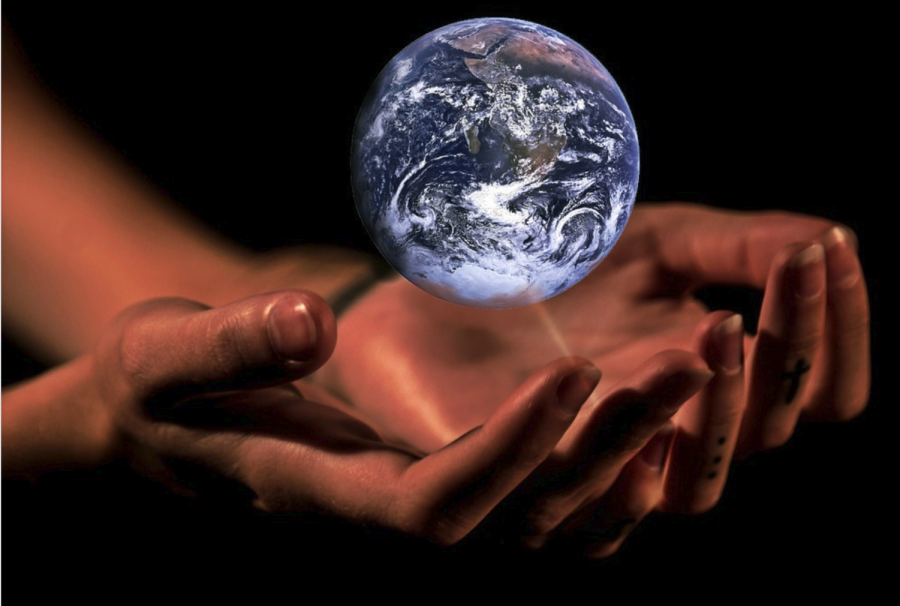We Need to Start Talking about Our Oceans
March 28, 2019
In today’s world subject to a constant deluge of negative news, few issues receive more coverage than climate change. While certainly necessary in increasing awareness of this life-altering issue, one consequence of the climate change that imperils the delicate balance of the biosphere has gone unnoticed. As reports detail the myriad ramifications of increased global temperature, most prominent of which are the decimation of forests from more frequent forest fires and bark beetle infestations and increased human mortality in northern latitudes from the spread of tropical diseases, the public has failed to comprehend the gravity of climate change on 71% of Earth’s surface area. Because of ocean acidification and increased temperatures, climate change will irrevocably damage the biodiversity of the world’s oceans.
Increased combustion of hydrocarbons (the organic remains of primarily partially decomposed marine animals and plankton), including octane, a principal component of gasoline, and methane, a vital component of natural gas, amplifies atmospheric concentrations of carbon dioxide. As the ever-rising human population has developed new technologies that intensify fossil fuel extraction and use and has adapted its lifestyle to an auto-centric world, the flux of carbon from the Earth’s surface to the atmosphere has soared. Proxy data confirm that carbon dioxide concentrations are the highest in the 800,000 years for which scientists have data due to ice cores and are believed to be the highest levels in 20 million years. Within the span of just 250 years, scientists have recorded a rise in the atmospheric concentration of carbon dioxide from 280 ppm to above 400ppm.
Meanwhile, the world’s oceans, which store 50 times more carbon than the atmosphere, have born the brunt of the new anthropogenic onslaught, having absorbed one-third to one-half of human-induced emissions. However, the oceans cannot continue to absorb carbon dioxide without limit or consequence; increased ocean temperatures result in reduced solubility of carbon dioxide, which will, in a positive feedback loop, result in increases in atmospheric carbon dioxide concentration in the future and thus higher global temperature. Just as concerning is the effect of increased oceanic carbon dioxide concentration on ocean acidity. By reacting a non-metal oxide, carbon dioxide, with water, an acid, carbonic acid, is formed (this phenomenon explains why sulfuric acid, the principal ingredient in acid precipitation, is created upon the emission of sulfur dioxide from the burning of coal). Carbonic acid, in turn, dissociates into bicarbonate and carbonate ions, the latter of which readily react with hydrogen ions to form bicarbonate ions. Doing so depletes the ocean’s natural concentration of carbonate ions, thereby increasing the solubility of calcium carbonate, the key component of marine animals’ shells and exoskeletons. Because of how integral calcium carbonate is across oceanic ecosystems, its dissolution in ocean water on account of water more than two times more acidic will decimate the equilibrium of various food chains. Increased acidity will both dissolve coral (it is composed of calcium carbonate) and kill zooxanthellae, the symbiotic algae that dwell within corals and enable them to act as a haven for countless organisms. In return, coral bleaching will make coral reefs unable to sustain life, reducing fish stocks worldwide, thereby impacting fisheries and making stocks more prone to overfishing.
The only solution is to rapidly reduce the emission of carbon dioxide. Without increased public support and the willingness of politicians to respond to the overwhelming scientific consensus, the world’s oceans, and with them the lifestyles of people who have not caused climate change, will fall victim to the predacious selfishness of humanity.
Sources:
Chemistry: The Central Science (Twelfth Edition)
Environment: The Science Behind the Stories (5th Edition)
https://www.epa.gov/climate-indicators/climate-change-indicators-atmospheric-concentrations-greenhouse-gases


